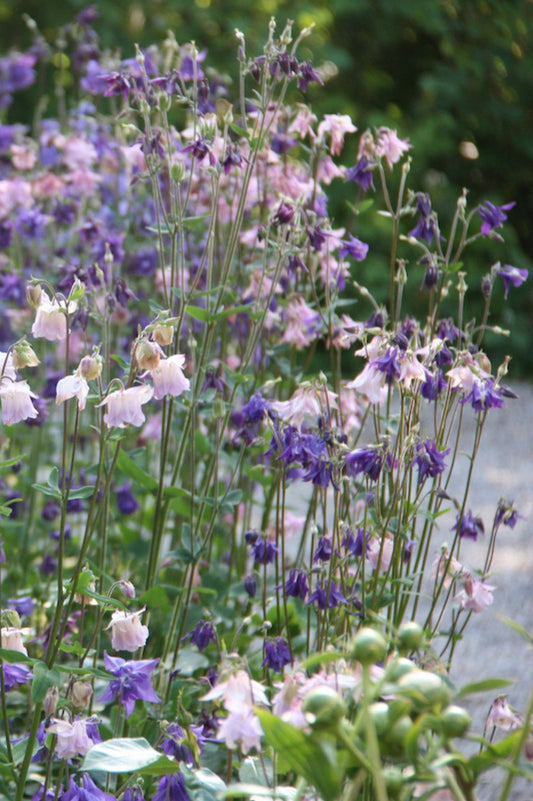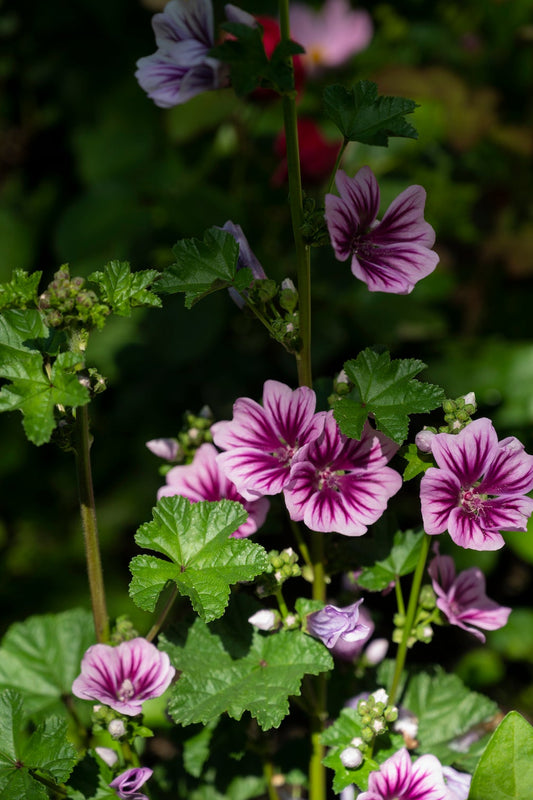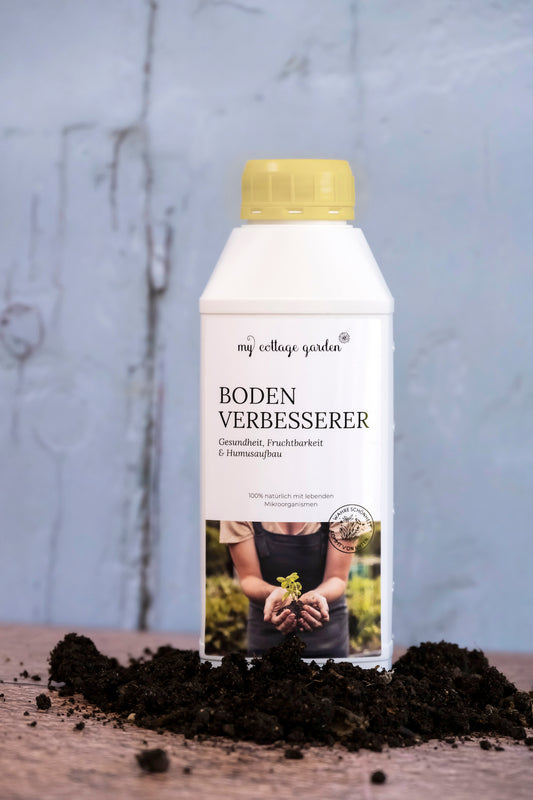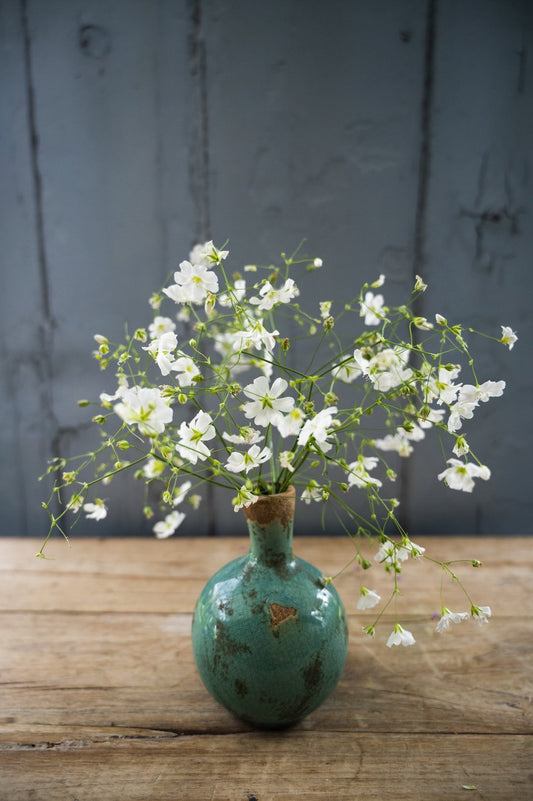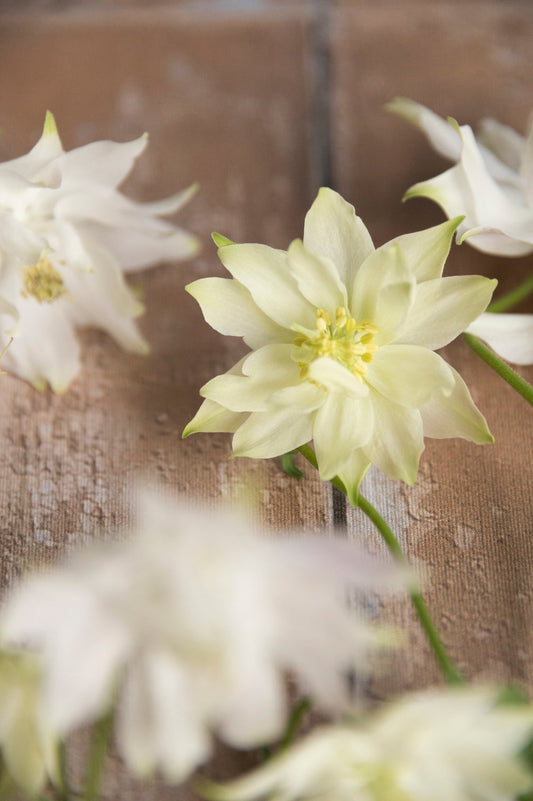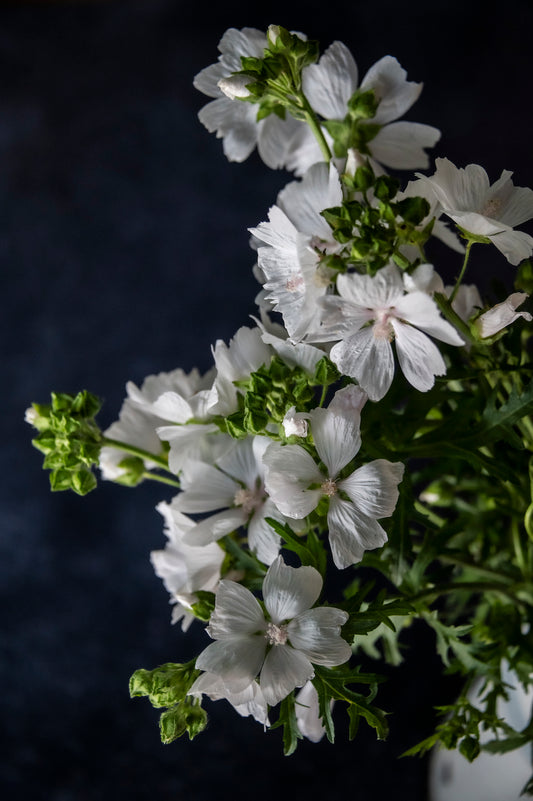11 TIPS FOR A LOW-CARE GARDEN – More enjoyment, less work
Mowing, hoeing, weeding, watering and fertilizing – a garden can keep you busy.
If it, which should actually be a place of relaxation, rest and wonder, takes up more and more space on the daily to-do list or the work simply becomes too physically demanding, it may be time to think about your own four fences.

Gardening (can we agree on "gardening"?) is one of the most wonderful things in life for me. Gardening is wonderful, relaxing, and fulfilling, but only because I can also enjoy my little paradise just as often. From my deck chair. Even though I often see doubtful and disbelieving faces, the work in my garden is actually quite limited.
So that you don't just work yourself to the bone for your private piece of greenery, but can also enjoy the special moments of the day - coffee in the morning sun, lunch break under the fruit tree, sundowner in the hammock - I've put together a few tips for creating a low-maintenance garden.

1. Stop mowing the lawn
I stick to this: A well-maintained lawn takes more work than a flowering perennial bed. Why? You only need to mow it a few times a year, right? That's a misconception, unfortunately. For a lawn—and I mean a real lawn, not a mossy meadow with scattered tufts of grass—to become strong, dense, and even, it requires a lot of care. That means weekly mowing, regular scarifying, and repeated fertilizing, removing moss, and repairing.
Things are much more relaxed with a wildflower meadow. Once sown, you can sit back and relax until mid-July – no mowing is allowed before then. Only after the flowers have formed seeds can they spread spontaneously through mowing.
2. NOTHING BEATS PERENNIALS
Most perennials remain faithful for a long time. After flowering, they gradually die back in the fall and sprout again each spring. The amount of work required remains manageable—cut back the withered shoots in late fall (or even better, early spring).

Catnip, Cranesbill Appleblossom, Lady's Mantle and Phlox "Bill Baker".
All very uncomplicated, especially in partial shade.
Perennials grow larger over time, and the bed naturally becomes denser. When planting, be sure to maintain the required spacing (usually indicated on the label). If the gaps in the bed are too large for you at first, you can plant annuals between them. Wonderful, easy-care, and rewarding perennials include: valerian , catnip, yarrow , autumn anemones, geraniums, mallows , blue sedum , sedum, and lady's mantle.
3. CHOOSE THE RIGHT VARIETIES
Choose low-maintenance and hardy plants. Avoid those that require a lot of water and nutrient-rich soil, for example. If summers remain as hot as they have been in recent years, look for drought-resistant varieties . And if you choose flowers that don't have high nutrient requirements, you won't need to fertilize them. Plants that need winter protection in the fall – better not. Although I make an exception for dahlias...

HERE you can find the blog post about my 22 climate heroes!
4. Native plants
They are well-versed in the weather and soil conditions of our latitudes and are therefore much more robust and easier to care for than flowers and shrubs from more southern climes. For the latter to thrive here, a considerably greater effort is required.

The radiant broadleaf – beautiful and unfortunately endangered. You can find a small, fine selection of native wild plants HERE .
5. LOCATION, LOCATION, LOCATION
Don't even try growing hydrangeas on a south-facing side in full sun or delphiniums in shady spots. It won't work. To each his own: in the right location—depending on the plant, sunny, shady, or partially shady, with or without airflow, in loamy or sandy soil. Plants thrive under optimal conditions. You'll save yourself work (e.g., constant watering) and, above all, frustration. Just take a look over the garden fence and see what's growing well there. If a plant feels at home at your neighbor's, there's a good chance it'll be happy to settle in yours, too.
6. ROSES GALORE
Especially wild and rambling roses, which don't even need pruning. Roses have deep roots. Once established, they can supply themselves with water. Regular watering is therefore unnecessary; in fact, it's counterproductive. This will make the rose lazy, and you'll train it to develop its roots at the top, where water is available regularly. Of course, this doesn't apply to the first few weeks after planting. Look for robust roses—one indicator would be the ADR label, or even heritage roses, which are usually healthier.

Roses certainly appreciate a dose of fertilizer in the spring, but I'd also avoid this for the first two years. Pruning stimulates flowering, and for me, this activity heralds the beginning of spring. But as already mentioned, if you simply choose wild or rambling roses, you can skip the trouble. If you feel like it, prune off any wilted parts of repeat-blooming varieties; this will result in more abundant blooms the second time around. But again, if I don't have the time or inclination, I just don't do it, and my roses don't seem to mind.
7. WEEDS – THE ETERNAL SUFFERING OF THE GARDENER
Here, too, you can make life easier with ground covers. Small perennials like woodruff, geranium "Ingwersen," knotweed, periwinkle, succulent (so sweet. The. Name.), woolly yarrow, or ivy quickly form a dense plant cover, leaving no chance for weeds. Ground-covering roses like "Sternenflor" or "Mirato" are also perfectly suitable.
I have wild strawberries everywhere in my beds. Delicious. And I plant them relatively closely. Do you have grass clippings or leaves? Spread them thinly over your beds. This retains moisture and suppresses weed growth. It also releases important nutrients. Mulching is an important aspect of a low-maintenance garden. Then you'll have to water significantly less (actually, "mulching" deserves its own point... then that would be 12 tips!)
8. BUCHS – VERY BAD TIMES
I have a lot of boxwood in my garden. It would actually be perfect. It looks beautiful, it adds structure to the orderly chaos, stays green even in winter, and frames my flowerbeds. I really like it, but unfortunately, the box tree moth is infesting my cottage garden. I'm constantly collecting it, spraying algae lime and Bacillus thuringiensis. I do this several times a season. It's a lot of work and not at all fun.

9. LEAVES – JUST A PEST?
No, it can also be useful. It should be removed from lawns in the fall so that the lovingly tended (and labor-intensive) grass can breathe and get light. You can safely leave it on the beds; leaves provide good protection against the cold and are also a natural fertilizer. Even in spring, I leave some of the leaves on the beds – I just make sure that the first small leaves of the perennials are exposed. I usually sprinkle a bit of fresh soil on the beds, then it looks nice (until the green of the plants covers everything). Which brings us back to the topic of "mulching."
10. AVOID POTS
Plants in pots are a lot of work. These poor creatures simply have no chance of taking care of themselves. They're completely dependent on us; they need to be watered (even twice on hot days) and fed. Of course, I have pots too—and I love them. But they also keep me quite busy...

11. THE COTTAGE GARDEN
A cottage garden isn't so strict about borders, straight lines, or meticulous order in general. Small outliers like a Spanish daisy that spreads itself and occasionally pops up along the edge of the path, or a horned violet between the paving cracks, are very welcome. Take advantage of the motto of orderly disorder and focus on lush and diverse growth. If a plant pops up that wasn't originally planned there, or if its offspring suddenly pops up somewhere else, enjoy it. And enjoy the new look that emerges in your garden every year.

And at some point I understood something. And internalized it!
“A garden is never finished.”
This very sentence has a liberating effect. At least for me. So, stretch out on all fours, let the sun shine on your belly, happily dig in the soil with your bare hands, and simply enjoy your garden. Because it's definitely doing well.

Photos: Janina Laszlo, Syl Gervais, My Cottage Garden

